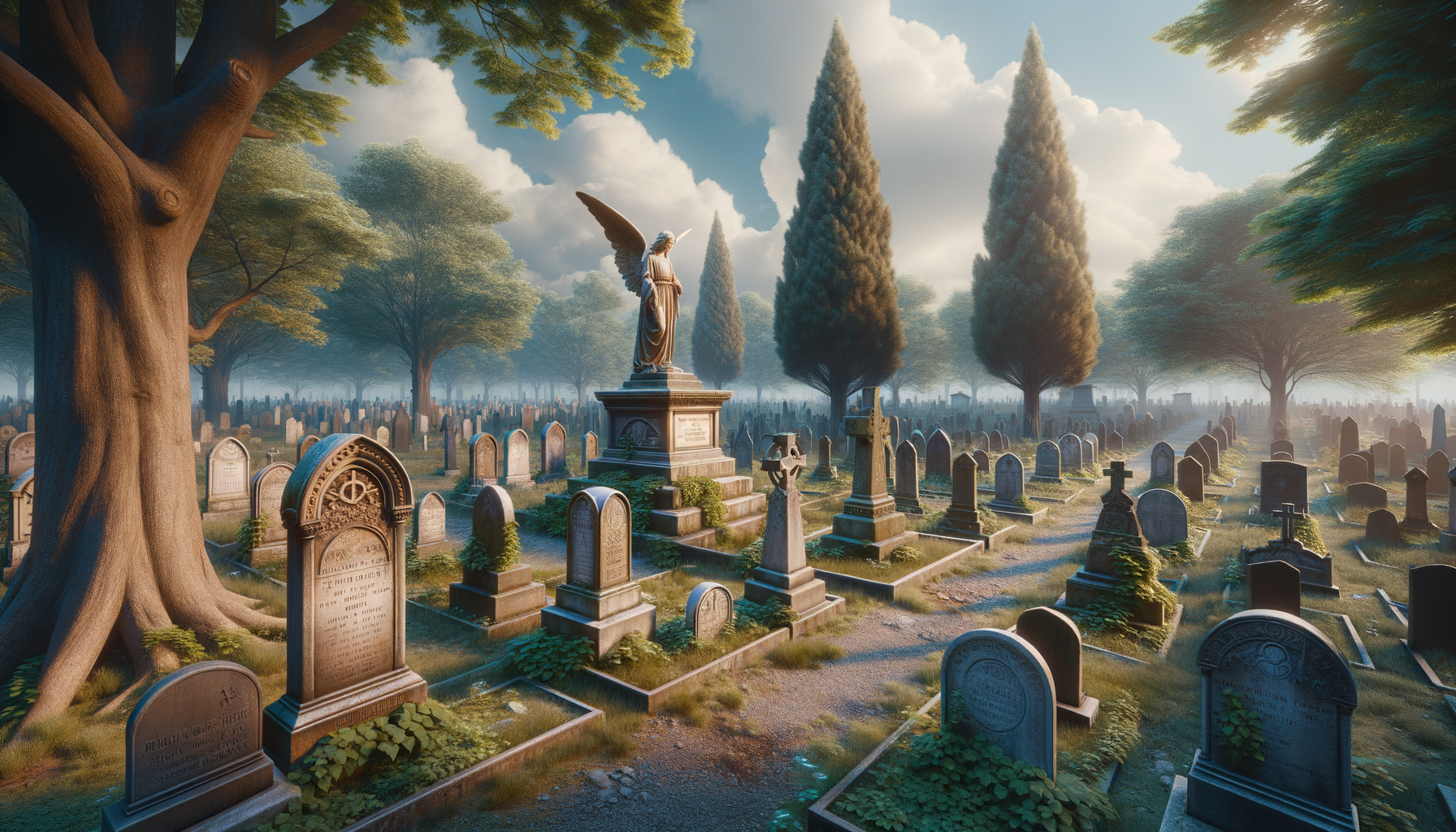The Historical Significance of Cemeteries
Cemeteries have been an integral part of human civilization for millennia, serving as more than just resting places for the deceased. Historically, they have been sites of cultural and religious significance, reflecting the values and beliefs of societies. In ancient Egypt, for example, elaborate tombs and pyramids were constructed to honor pharaohs and ensure their journey to the afterlife. These cemeteries were not only burial sites but also architectural marvels that showcased the Egyptians’ advanced understanding of engineering and art.
In Europe, medieval cemeteries were often located near churches, serving as a testament to the close relationship between faith and the afterlife. These burial grounds were places where communities gathered not just to mourn, but to celebrate life and continuity. The headstones and monuments found in these cemeteries tell stories of individuals and families, offering insights into the social hierarchies and historical events of their times.
Today, cemeteries continue to hold historical significance, preserving the heritage and traditions of different cultures. They serve as open-air museums, where each gravestone is a piece of history waiting to be discovered. As such, they play a crucial role in educating future generations about the past, fostering a deeper understanding of our shared human experience.
Cemeteries as Cultural Landscapes
Cemeteries are not just places for mourning; they are cultural landscapes that reflect the diversity and richness of human expression. Across the world, cemeteries vary in design, reflecting local customs, religious beliefs, and artistic styles. In Japan, for instance, cemeteries often feature Zen gardens, where simplicity and nature are emphasized, creating a serene atmosphere for contemplation.
In contrast, Mexican cemeteries come alive during the Day of the Dead celebrations, with vibrant decorations and offerings that honor deceased loved ones. This cultural tradition highlights the Mexican perspective on death as a natural part of life, where the dead are remembered with joy and reverence. Such practices demonstrate how cemeteries can be spaces for cultural expression and community gatherings.
Moreover, cemeteries serve as habitats for various plant and animal species, contributing to biodiversity in urban areas. The presence of trees, shrubs, and flowers not only enhances the aesthetic appeal of these spaces but also provides a sanctuary for wildlife. As such, cemeteries are important ecological sites that balance human needs with environmental conservation.
The Role of Cemeteries in Modern Society
In today’s fast-paced world, cemeteries offer a place of solace and reflection, providing individuals with a space to connect with their emotions and memories. They are places where people can come to terms with loss, find peace, and seek closure. The tranquil environment of cemeteries encourages introspection, allowing visitors to disconnect from the chaos of everyday life and focus on what truly matters.
Cemeteries also play a vital role in community identity, serving as landmarks that anchor people to their roots. They are places where families gather to commemorate anniversaries, share stories, and maintain connections with their ancestors. In this way, cemeteries help to strengthen familial bonds and preserve cultural heritage.
Additionally, cemeteries are increasingly becoming sites for creative and educational initiatives. Guided tours, art installations, and historical reenactments are some of the activities that are being organized to engage the public and promote awareness about the importance of these spaces. Such initiatives not only enhance the cultural value of cemeteries but also ensure their preservation for future generations.
Preservation and Conservation Challenges
Despite their significance, cemeteries face numerous challenges in terms of preservation and conservation. Urbanization and land development often threaten the existence of historic cemeteries, leading to the loss of valuable cultural and historical resources. The pressure to accommodate growing populations has resulted in the relocation or destruction of many burial sites, erasing important links to the past.
Environmental factors such as erosion, pollution, and climate change also pose significant threats to cemeteries. Weathering and natural decay can damage headstones and monuments, making it difficult to maintain these sites in their original condition. Efforts to preserve cemeteries require collaboration between government agencies, conservationists, and local communities to ensure that these spaces are protected and maintained.
Moreover, the rising costs of cemetery maintenance and the lack of funding can hinder preservation efforts. Community involvement and public awareness campaigns are essential in advocating for the protection of cemeteries, highlighting their value as cultural and historical assets. By fostering a sense of responsibility and stewardship, we can ensure that cemeteries continue to serve as places of remembrance and reflection for generations to come.
The Future of Cemeteries: Innovation and Adaptation
As society evolves, so too must our approach to cemeteries. Innovation and adaptation are key to ensuring that these spaces remain relevant and accessible. One emerging trend is the development of green cemeteries, which prioritize environmentally-friendly burial practices. These cemeteries use biodegradable materials and avoid embalming chemicals, reducing the ecological footprint of traditional burial methods.
Another trend is the integration of technology into cemetery management and visitor experiences. Digital platforms and mobile apps can provide virtual tours, historical information, and interactive maps, enhancing the educational value of cemeteries. Such technologies can also facilitate genealogy research, allowing individuals to trace their ancestry and connect with their heritage.
Furthermore, the concept of memorial parks is gaining popularity, where cemeteries are designed as multifunctional spaces that combine recreation with remembrance. These parks offer walking trails, meditation areas, and cultural events, encouraging community engagement and promoting the idea that cemeteries are places for the living as well as the dead.
By embracing innovation and adaptation, cemeteries can continue to fulfill their role as sacred spaces that honor the past while meeting the needs of contemporary society.




Leave a Reply